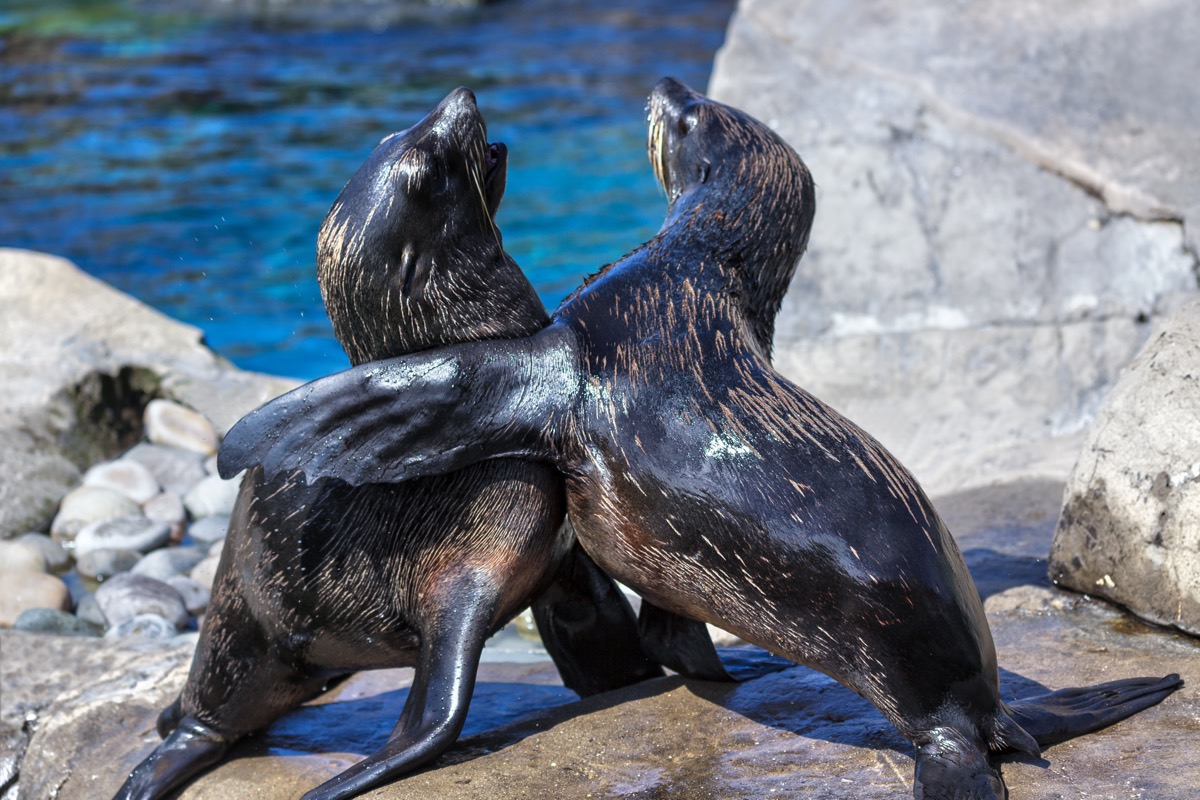Invisible Stew of Plastic Pollution Found in Fur Seal Poop

The global invasion of microplastics now extends to the remotest islands in Chile, and the source could be your washing machine.
Scientists have found plastic microfibers, tinier than 0.04 inches (1 millimeter) in length, in the poop of fur seals on far-flung Guafo Island. It's the first discovery of these tiniest fragments of plastic in wild animal scat, researchers report in the November issue of the journal Marine Pollution Bulletin.
The finding points to an alarming, invisible stew of plastic pollution in the ocean, but it also provides a way to track that contamination, said study senior author Cristóbal Galbán-Malagón, a professor in ecology and biodiversity at the Universidad Andrés Bello in Chile. [Our Amazing Planet Top to Bottom: Mountaintop to Ocean Trench (Infographic)]
"We can use these animals, without disturbing them, as sentinels for microplastics," Galbán-Malagón told Live Science.
Pervasive pollutants
Galbán-Malagón's doctoral student, marine biologist Diego Joaquín Perez-Venegas came up with the idea to search fur seal species for microplastics about five years ago, Galbán-Malagón said. The researchers tramped Guafo Island, scooping seal poop from the fur seals (Arctocephalus australis) that use it as a breeding ground. The island is outside the Corcovado Gulf in northern Patagonia and is uninhabited other than small rotating crews who man a small lighthouse built there. The researchers then returned the samples to their lab to dissolve the organic material with lye, leaving only inorganics like plastic behind.
Studies across the globe have found microplastics, or plastics less than 0.2 inches (5 mm) in length, everywhere, including in human feces and in the digestive tracts of creatures living deep in the Mariana Trench. But Galbán-Malagón and his team wanted to think smaller. They focused on even tinier plastic microfibers, which are much harder to detect because they're invisible to the naked eye. The researchers had to be vigilant against contamination because fibrous microplastics are everywhere — even floating in indoor and outdoor air.
Of the 51 samples collected at Guafo Island and analyzed by the researchers, 67 percent had these miniscule fibers inside, the researchers found. There were between about 3 and 13 fibers per gram, overall, corresponding to a range of up to 180 fibers per stool sample.
Get the world’s most fascinating discoveries delivered straight to your inbox.
Fibers everywhere
The plastic fibers could be coming from several sources, Galbán-Malagón said. They may be degraded bits of lost or abandoned fishing nets, which are typically made of polymer rope. Many probably come from the breakdown of larger plastic pollution, like the plastic bags and candy wrappers frequently found in the guts of seabirds and other marine animals. Another source may be wash water and textiles, Galbán-Malagón said: Synthetic fabrics like polyester fleece shed tiny fibers every time they're washed. Wastewater treatment plant filters don't remove fibers that tiny; to find them in the lab, Perez-Venegas and his colleagues had to use filters normally used for catching phytoplankton or even bacteria.
Fur seals are top ocean predators, so the microfibers in their digestive systems probably come from plastics accumulated from the bottom up. The tiny fibers get mixed in with and consumed by plankton, which are then eaten by crabs and fish, which are fur seals' main meals.
"You have something like an umbrella to test if the community that is sharing this space is exposed or not to microplastics," Galbán-Malagón said.
Now that microfibers have been found nearly everywhere, the question is if and how they affect animal (and human) health. Lab experiments suggest that invertebrates like sea cucumbers and scallops struggle to reproduce, feed and stay healthy when fed microplastics, according to a 2016 paper in the journal Scientific Reports, but health impacts on larger vertebrates have yet to be studied. For Galbán-Malagón and his colleagues, that kind of research is the crucial next step. The team plans to submit a paper on the topic for peer review in the coming weeks.
- Marine Marvels: Spectacular Photos of Sea Creatures
- In Images: The Great Pacific Garbage Patch
- In Photos: The Wonders of the Deep Sea
Originally published on Live Science.

Stephanie Pappas is a contributing writer for Live Science, covering topics ranging from geoscience to archaeology to the human brain and behavior. She was previously a senior writer for Live Science but is now a freelancer based in Denver, Colorado, and regularly contributes to Scientific American and The Monitor, the monthly magazine of the American Psychological Association. Stephanie received a bachelor's degree in psychology from the University of South Carolina and a graduate certificate in science communication from the University of California, Santa Cruz.


